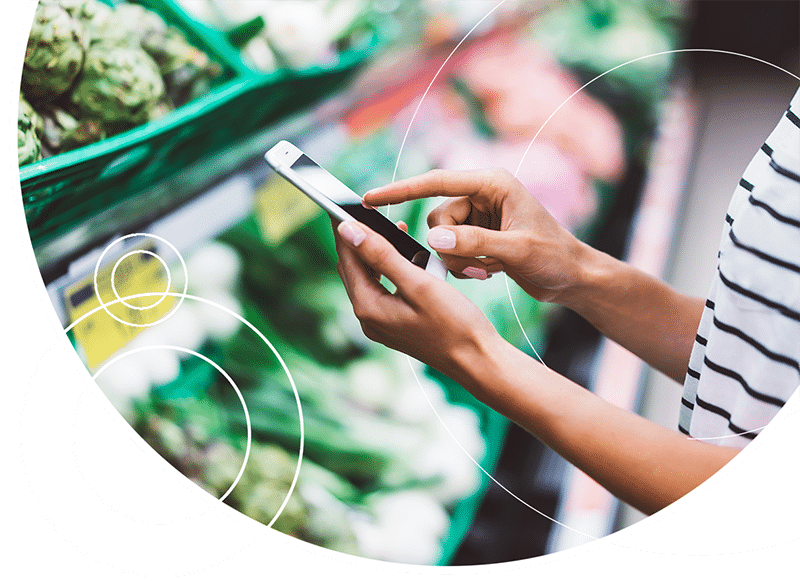It’s no surprise that e-commerce and mobile-app based shopping has taken over as one of the biggest game changers in recent history: The convenience of digital shopping for the customer is something in which to revel. But in the past few years, this online technology is actually leading to a detrimental practice within the retail world: Click-&-Collect.
The concept of Click-&-Collect (also known as “buy online, pick up in store”) is simple. Customers buy something online or through a retailer’s mobile app and simply show up in the store and pick it up. Sounds easy, right? And the convenience for the customer should mean a game changer for the retailer—but that’s actually not the case.
What is happening for many retailers is that the scenario plays out more like this: The customer buys something online or through a retailer’s mobile app and simply shows up in the store, picks it up, and then promptly leaves. And there’s the problem. The modernization of the customer order fulfillment process has led retailers to systematically drive their customers away from the interior of their stores—meaning less wallet-share and less opportunity for clienteling.
The sad part here is that though technology was implemented to “revolutionize” the customer experience, it has worked to circumvent the reason that stores exist. In fact, what Click-&-Collect has done—and this is where I date myself—is simply digitize the old-school retail model mirroring the likes of Consumers Distributing, Sears Catalogue ordering, etc. In fact, I fondly remember the days when my parents ordered things via telephone and then picked up their order a few weeks later at a customer service counter. Is this really what retailers want to go back to?
Now, don’t mistake my dislike for Click-&-Collect as dismissive. It’s quite the opposite. I do like the concept—I just don’t agree with the execution. Here’s what needs to change: When customers buy online or in-app for the purpose of picking up an item in store, they are presenting the retailer with an incredible set of opportunities.
First, they are telling the retailer what they want to buy, where they live in proximity to the store, and what the most convenient time to visit the store is for them. This is an incredible amount of data-driven insight that can be leveraged by the retailer. Those data points can become the impetus for far greater customer engagement practices if used correctly.
Second, the customer is physically showing up at the store within a certain timeframe. Think about how powerful that situation is. This is the retail equivalent to dinner reservations at a restaurant—a predictive data point that can be calculated as a certain conversion metric. If the retailer knows that the customer is coming in, and if they can leverage the customer’s profile information, they could very well up-sell that customer with ease.
And third, combining the first two points, the customer is showing interest in the retail establishment and brand in a way far beyond that of an unknown walk-in off the street. They have browsed the website, perhaps downloaded and used the retailer’s mobile-app, and purchased goods that deliver insight into what they like. With that data, the opportunity to make that shopping experience special and highly individualized is literally being delivered (pardon the pun) to the retailer’s doorstep.
So, with these points alone, the retailer could greet customers by name, reference purchase history as a way of starting a conversation, and prove that they know them and appreciate them—and then make special offers to them to prove that you want to enable them and value them. A powerful change in dynamic from simply handing a stranger a package and telling them to have a nice day.
And the saddest part of the Click-&-Collect scenario is that it could be transformed into a fantastic, modern and highly effective customer engagement scenario by simply implementing a SaaS package that does all of that for them. Literally, our platform could be spun up in weeks, enabling retailers caught in this situation to action customers’ likes, preferences, habits, purchase history, and more, to automatically determine what and how to communicate with them. And to create a truly unique customer experiences across all channels—online, in-app, and in-store—delivering real-time, personalized, actionable marketing and sales messages.
The morale here is not about the use of technology. It’s simply about the use of the correct technology. Don’t let old-school retail models be so-called “modernized” and repackaged as something new. We all witnessed what happened to Sears … don’t go there … that is literally the epitome of Click-&-Lose.

Andrew Armstrong
Chief Customer Officer
Andrew Armstrong is the Chief Customer Officer at omNovos – working globally with customers to design world-class customer engagement programs. He’s a prolific writer and speaker on topics including customer loyalty, personalization, and retail marketing technologies. Connect with him on LinkedIn or Twitter - his open approach to all topics usually leads to a fun discussion and a few laughs.

